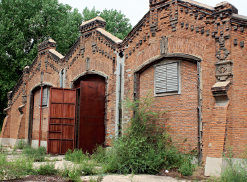Maximizing China’s Cultural Heritage
China Today by DUAN HAIWANG & PAN JIANFANG, January 24, 2017 Adjust font size:
CT: How have you and your team developed Chinese cultural heritage preservation and utilization over the past few years?
Feng: My team took the lead in completing the Overall Plan for Preserving and Managing the Great Wall Sites in Jilin Province. We made the Plan for Preserving the Salawusu Site, Ordos City in Inner Mongolia Autonomous Region (this site dates back to the Paleolithic Age), which served as the guidelines for the preservation and utilization of the site. We also completed the Plan for Preserving and Renovating Shiyi Bridge in Hunan Province which was approved by the State Administration of Cultural Heritage (SACH). We are currently working on the Plan for Renovating the Russian-style Architectural Complex in Gongzhuling City in Jilin Province, which is nearing completion.
CT: What can we do to improve the preservation and utilization of our cultural heritage sites?
Feng: I think the government plays a leading role under the current system. Over the past few years, the Chinese government has paid increasing attention to cultural heritage preservation, creating more supportive policies and financial aid. I believe the government’s role remains crucial in the effort to bring Chinese cultural heritage preservation to a high standard.
In addition, more professional research, consultation and design institutions, like my team, are needed. As China has such a long history and vast territory, its cultural heritage sites are very diverse, including ancient architecture, Buddhist grottos, and murals. The joint efforts of professionals with backgrounds in architecture, urban planning, archaeology, history, geography, materials, and geotechnical engineering are needed for preserving different types of cultural heritage sites. However, these skills are in short supply, so the government and institutions of higher learning are working hard to nurture new talent and the SACH also organizes occasional training sessions.
Public participation is also important. There are cultural heritage sites scattered all over China, with new sites constantly being discovered. It is difficult to protect them with only the limited efforts of the government and relevant departments, as they are unable to implement complete supervision. Therefore, it is crucial to enhance people’s awareness of cultural heritage preservation and encourage public participation.
The media should, as they speak directly to the population, utilize its guiding role to shape public opinion. If they report on the significance of cultural heritage preservation and showcase new technologies to be used in the process, as well as highlighting previous mistakes in order to encourage change, the effects will be noticeable.
Last but not least, exchanges and cooperation, both domestic and international, should be increased. Today there are global standards and guidelines widely acknowledged by the international community such as The Venice Charter for the Conservation and Restoration of Monuments and Sites.
However, countries still have different views on cultural heritage preservation. Asian and European architecture is very different, for instance. European buildings are often stone structures that can withstand erosion caused by wind and rain, while those in the East are more often wooden structures which require constant renovation and maintenance. This leads to different views on how to preserve ancient architecture.
From the very beginning, Europeans were of the opinion that fewer intervening measures should be adopted – for example, the ruins of the Roman Colosseum have simply been left as they are – but the Asian approach has a tradition of ongoing restoration and renovation of cultural relics and we believe that this approach will not affect their authenticity. The Ise Grand Shrine building complex in Japan is rebuilt every 20 years as a way of passing building techniques from one generation to the next.
Such tradition triggered a debate in international cultural heritage preservation circles, as some feared that the renewal process would harm its authenticity. Experts around the world travelled to Japan especially to conduct on-site inspections and discussions, and they eventually issued the Nara Document of Authenticity. They recognized that the concept and application of the term “authenticity” actually varies from culture to culture. Therefore when the authenticity of a particular cultural heritage site is being assessed, its underlying cultural context should be considered.
The significance of these international exchanges is that they will help the world understand China, and form a new respect and acceptance of Chinese culture and values.

